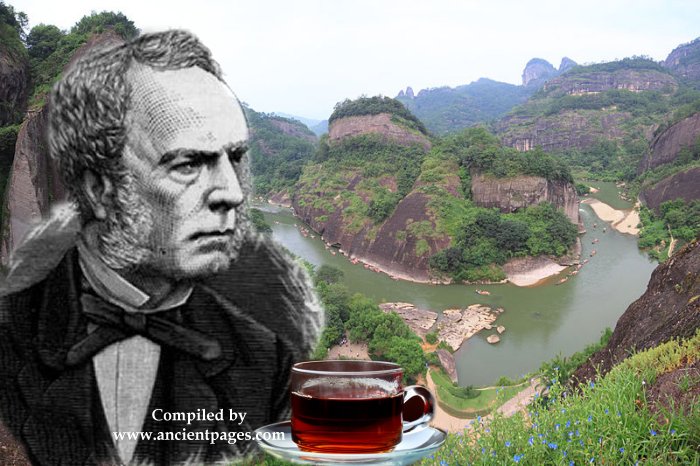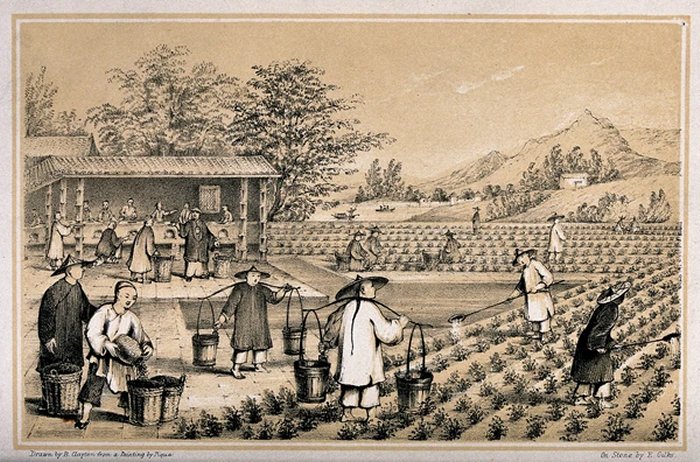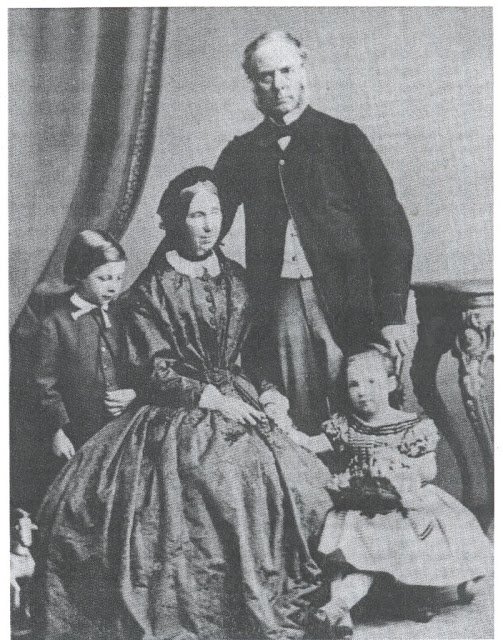Robert Fortune’s Dangerous Mission To Obtain Tea From The Chinese
A. Sutherland - AncientPages.com - After four months, the Scottish botanist Robert Fortune reached Shanghai, China. It was a hot September day in 1848, but he had no time to rest.
Robert Fortune must turn into Chinese with everything it means in appearance, clothing, speech, and behavior, and he had to create his new identity.
He would operate in disguise as a Chinese official to blend in with the surroundings and to be able to spy.
His mission was dangerous. It was a spy mission during which Fortune had to steal 13 thousand tea seedlings of Chinese tea plants (Camellia sinensis) from China to India on behalf of the British East India Company.
So he changed his name to Sing Wang (means: 'brilliant flower'), shaved his head, and then grew a pigtail. He learned to eat with chopsticks, spoke Mandarin, and wore Chinese clothes to blend with the locals better.
He was brave enough to fight pirates who attacked him on one of his visits.
Everything began on May 7, 1848. Fortune was working with the plants at Chelsea Physic Garden, London when he was suddenly visited by Professor John Forbes Boyle, a famous botanist and adviser at the East India Company.
Fortune must learn how the ancient Chinese produced tea, but it was a secret. Credit: Wellcome Collection - CC BY 4.0
He wondered if Fortune might think of going out for tea-hunting in China. The conditions were highly generous; Fortune would get 500 pounds - five times as much as he earned in the Chelsea garden.
It was a tempting offer, and he agreed.
Fortune Travels To China On A Dangerous Mission
Fortune understood his mission could result in a death sentence if he were caught as a spy. China was a closed nation, and spying on foreigners attempting to steal the nation's secret knowledge of tea production would be executed without hesitation.
Fortune had previously visited China and discovered that green and black tea come from the same plant, but he didn't know much more.
The money was tempting, so he left his wife and two children and traveled to China. He was slightly worried that his height would attract people's attention. Otherwise, he looked like the Chinese traveling from a distant province on the other side of the Great Wall. He believed this answer should satisfy the curious ones.
In October 1848, Fortune reached the first tea factory at the Yangtze River. His disguise was sufficient, and no one suspected he was a foreigner.
To the factory manager, Fortune was presented as Mr. Sing Wang", the translator's companion who traveled far to admire and learn more about the fantastic tea production. The proud manager was delighted to hear his workers' tea was appreciated and kindly offered a guiding factory tour.
Well, inside the factory, Fortune now has the chance to learn how the production proceeds. He is surprised to see some of the tea manufacturers have blue fingers and is ashamed when he is told the reason.
Robert Fortune (1812 - 1880) and his family. Credit: Public Domain
The manager explained that the Chinese mix blue and yellow dye with the dried tea leaves. He adds that the British pay a higher price for tea with an intense green color. Fortune feels embarrassed and understands the British must appear barbaric to the Chinese, but he focuses on his mission to collect tea plants and seeds for export to India.
The East India Company had also ordered him to gather as much information as possible about Chinese tea production. Fortune is determined to fulfill his mission even if the risk is high and his life is at stake.
Having left the tea factory, Fortune asks his guide and interpreter to show him places where one can find the finest tea leaves. His guide takes him to Anhui, an eastern Chinese province, an essential agricultural region in tea production. There, Fortune spends time collecting tea plants. When his guide's father becomes slightly suspicious, Fortune gives him money to keep him quiet.
In January 1849, Fortune returned to Shanghai with knowledge of tea production and the collected plants and seeds. He telegrams the East India Company, informing them that his mission has been accomplished as planned.
The next step is to pack and deliver his stolen goods to India. Hopefully, his precious stolen treasure will reach India in good condition. Fortune places the 13,000 plants and 10,000 seeds inside a Wardian case, a small plant house invented in the mid-1800s to transport rare plant specimens.
A Disaster Happens
The journey between Calcutta and the Himalayas was long, but the plants could have survived without an employee from the East India Company. Obviously, not knowing what he was doing, the man opened the Wardian case and gave the plants water. His intentions were good, but half of the plants were destroyed, and none of the seeds could be saved.
How ironic that the East India Company ruined its own stolen goods.
Fortune Obtains The World's Finest Tea
Meanwhile, Fortunes was still in China and did not know about the disaster. He spent his time visiting many places where he could acquire information about the valuable Da Hong tea. This particular type of tea is considered one of the world's most desirable, expensive, and finest teas, and Fortune is determined to find out how he can get it back to England.
He learns that this tea is produced from leaves growing on three different bushes. The trouble is that Buddhist monks guard the tea bushes day and night. So, stealing anything is out of the question. Fortune must devise another idea, but fate is kind to him.
His new interpreter, Sing Hoo, loves to talk and boast. When Sing Hoo and Fortune visit the Buddhist monks who guard the precious tea bushes, Sing Hoo lies. He tells the monks that Fortune is a rich and respected man with many wives and a descendant of Genghis Khan (1162 - 1227), the great Mongolian leader. He also adds that Fortune is a close friend of the Chinese Emperor. No wonder the monks were impressed, and Fortune received baskets full of tea plants and seeds from the heavily guarded bushes.
Once again, Fortunes returns to Shanghai, where he is told about the destroyed delivery of the previously obtained plants. He is devastated but understands that he must better seal the plants this time. He packs the new plants and seeds between several soil layers and sends the transport to its final destination. Then, he orders eight experts to accompany him to the Himalayas. He will instruct them there to produce tea just like the Chinese do.
Fortune reached the Himalayas in 1851, and he was delighted that his two years as a spy had paid off.
India and Ceylon are large tea producers. It wouldn't have been easy to achieve without Fortune's daring mission. Some will call him a thief, but those who love tea are grateful that he spread Chinese secrets to other countries, giving people an extraordinary opportunity to enjoy a nice cup of tea.
The ancient history of tea goes back at least 3,000 years, if not more. Tea is today the world's second most-consumed drink after clean water. The next time you drink tea, give Robert Fortune a thought.
Written by – A. Sutherland - AncientPages.com Senior Staff Writer
Updated on December 3, 2023
Copyright © AncientPages.com All rights reserved. This material may not be published, broadcast, rewritten or redistributed in whole or part without the express written permission of AncientPages.com
Expand for referencesMore From Ancient Pages
-
 Unraveling the mystery of the Rhynie Man
News | Aug 24, 2015
Unraveling the mystery of the Rhynie Man
News | Aug 24, 2015 -
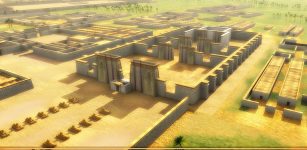 Ancient Egyptian Capital Tell El-Amarna Mapped Through Satellite Imagery System
Civilizations | Sep 11, 2015
Ancient Egyptian Capital Tell El-Amarna Mapped Through Satellite Imagery System
Civilizations | Sep 11, 2015 -
 Ogdoad Of Hermopolis – Ancient Egyptian Concept Of Eternal And Primeval Forces
Egyptian Mythology | May 16, 2019
Ogdoad Of Hermopolis – Ancient Egyptian Concept Of Eternal And Primeval Forces
Egyptian Mythology | May 16, 2019 -
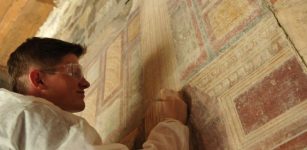 Poles conduct mural restoration in the villa buried by the ashes of Vesuvius
News | Aug 26, 2015
Poles conduct mural restoration in the villa buried by the ashes of Vesuvius
News | Aug 26, 2015 -
 Kahina – The Prophetic Berber Queen Who Resisted The Muslim Invasions Of The Numidia Kingdom
Featured Stories | Aug 14, 2021
Kahina – The Prophetic Berber Queen Who Resisted The Muslim Invasions Of The Numidia Kingdom
Featured Stories | Aug 14, 2021 -
 Beautiful Legend Of The Christmas Rose – A Symbol Of Love And Hope
Christmas Traditions | Dec 26, 2024
Beautiful Legend Of The Christmas Rose – A Symbol Of Love And Hope
Christmas Traditions | Dec 26, 2024 -
 The Name Vatican And Etruscan Goddess Vatika Of The Underworld – What Is The Connection?
Featured Stories | Jun 6, 2020
The Name Vatican And Etruscan Goddess Vatika Of The Underworld – What Is The Connection?
Featured Stories | Jun 6, 2020 -
 Beads Show European Trade In African Interior Used Indigenous Routes
Archaeology | Sep 17, 2022
Beads Show European Trade In African Interior Used Indigenous Routes
Archaeology | Sep 17, 2022 -
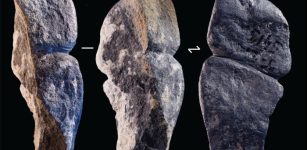 Oldest Carving Of A Penis Discovered On Ancient Mongolian Pendant
Archaeology | Jun 20, 2023
Oldest Carving Of A Penis Discovered On Ancient Mongolian Pendant
Archaeology | Jun 20, 2023 -
 Who Was King Menes? Mystery Of This Legendary Ruler May Go Back 20,000 Years
Civilizations | May 1, 2017
Who Was King Menes? Mystery Of This Legendary Ruler May Go Back 20,000 Years
Civilizations | May 1, 2017 -
 Longest European Burial Mound Pre-Dating The Egyptian Pyramids Discovered In Czechia
Archaeology | Jun 24, 2024
Longest European Burial Mound Pre-Dating The Egyptian Pyramids Discovered In Czechia
Archaeology | Jun 24, 2024 -
 The Olympics In Ancient And Modern Times – What Has Changed?
Featured Stories | Jun 20, 2019
The Olympics In Ancient And Modern Times – What Has Changed?
Featured Stories | Jun 20, 2019 -
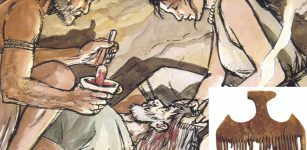 Evidence Of Hallucinogenic Drug Use During Bronze Age Ceremonies Found
Archaeology | Apr 6, 2023
Evidence Of Hallucinogenic Drug Use During Bronze Age Ceremonies Found
Archaeology | Apr 6, 2023 -
 Only Apocalyptic Destruction Can Eliminate The Gap Between Rich And Poor – Historian Says
Featured Stories | Jun 6, 2018
Only Apocalyptic Destruction Can Eliminate The Gap Between Rich And Poor – Historian Says
Featured Stories | Jun 6, 2018 -
 Hopi’s Encounter With Maasaw – The Skeleton Man And His Gift Of Sacred Knowledge
Myths & Legends | May 5, 2017
Hopi’s Encounter With Maasaw – The Skeleton Man And His Gift Of Sacred Knowledge
Myths & Legends | May 5, 2017 -
 Gigantic Viking Age Burial Ground With Artifacts And 50-Meter-Long Shipwreck Unearthed In Tvååker, Halland, Sweden
Archaeology | Oct 18, 2024
Gigantic Viking Age Burial Ground With Artifacts And 50-Meter-Long Shipwreck Unearthed In Tvååker, Halland, Sweden
Archaeology | Oct 18, 2024 -
 Moses’ Secret Knowledge Of Superior And Forbidden Technology – Hundreds Of Chariots Hovering Over Sinai – Part 1
Biblical Mysteries | Sep 21, 2020
Moses’ Secret Knowledge Of Superior And Forbidden Technology – Hundreds Of Chariots Hovering Over Sinai – Part 1
Biblical Mysteries | Sep 21, 2020 -
 Magnificent Ancient Treasure Discovered In Crimea – But Who Does It Belong To?
Archaeology | Dec 10, 2024
Magnificent Ancient Treasure Discovered In Crimea – But Who Does It Belong To?
Archaeology | Dec 10, 2024 -
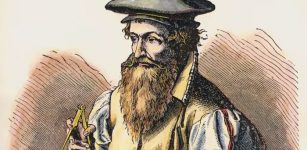 On This Day In History: Gerardus Mercator Famous Mapmaker Of All Time Died – On Dec 2, 1594
News | Dec 2, 2016
On This Day In History: Gerardus Mercator Famous Mapmaker Of All Time Died – On Dec 2, 1594
News | Dec 2, 2016 -
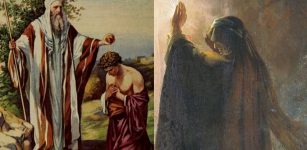 Witch Of Endor – A Biblical Ghost Story Or A Woman With Supernatural Powers?
Biblical Mysteries | Jul 9, 2021
Witch Of Endor – A Biblical Ghost Story Or A Woman With Supernatural Powers?
Biblical Mysteries | Jul 9, 2021

